Nineteenth Century
Caloric Vita Oil



Source.

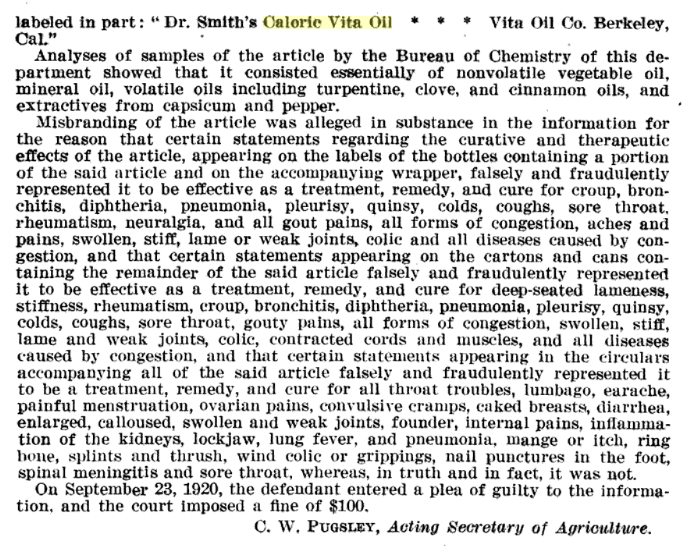
Source.
Posted By: Paul - Fri Mar 15, 2019 -
Comments (1)
Category: Business, Advertising, Patent Medicines, Nostrums and Snake Oil, Nineteenth Century
Hostetter’s Bitters
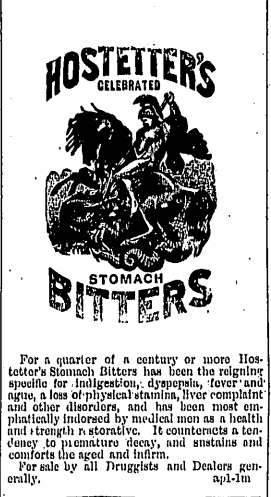

Hostetter's "Celebrated" Bitters was a nostrum developed by Dr. Jacob Hostetter of Lancaster, Pennsylvania. His son, David Hostetter, put the formula into large scale production in 1853 and it soon became a national best-seller. During the Civil War, Dr. J. Hostetter's Stomach Bitters was sold to soldiers as "a positive protective against the fatal maladies of the Southern swamps, and the poisonous tendency of the impure rivers and bayous." The original formula was about 47% alcohol -- 94 Proof! The amount of alcohol was so high that it was served in Alaskan saloons by the glass. Hostetter sweetened the alcohol with sugar to which he added a few aromatic oils (anise, coriander, etc.) and vegetable bitters (cinchona, gentian, etc.) to give it a medicinal flavor. From 1954 to 1958, when it was no longer marketed, the product was known as Hostetter Tonic.
More info here.
Posted By: Paul - Thu Feb 21, 2019 -
Comments (3)
Category: Antiques, Anachronisms and Throwbacks, Advertising, Patent Medicines, Nostrums and Snake Oil, Nineteenth Century, Twentieth Century, Alcohol
Frozen Sections of a Child
Back in 1881, Dr. Thomas Dwight of Harvard Medical School authored Frozen Sections of a Child, which sounds like the kind of book one might find in the library of a serial killer. As the title indicated, the book consisted of anatomical illustrations of frozen cross-sections of a three-year-old child.In the preface, Dwight helpfully included advice for those readers who might want to create their own frozen sections of a child:
More details: Harvard's Countway Library. You can also read the full book online via Google Books.

Posted By: Alex - Fri Feb 15, 2019 -
Comments (0)
Category: Body, Surgery, Books, Nineteenth Century
Chester Greenwood, Inventor of Earmuffs
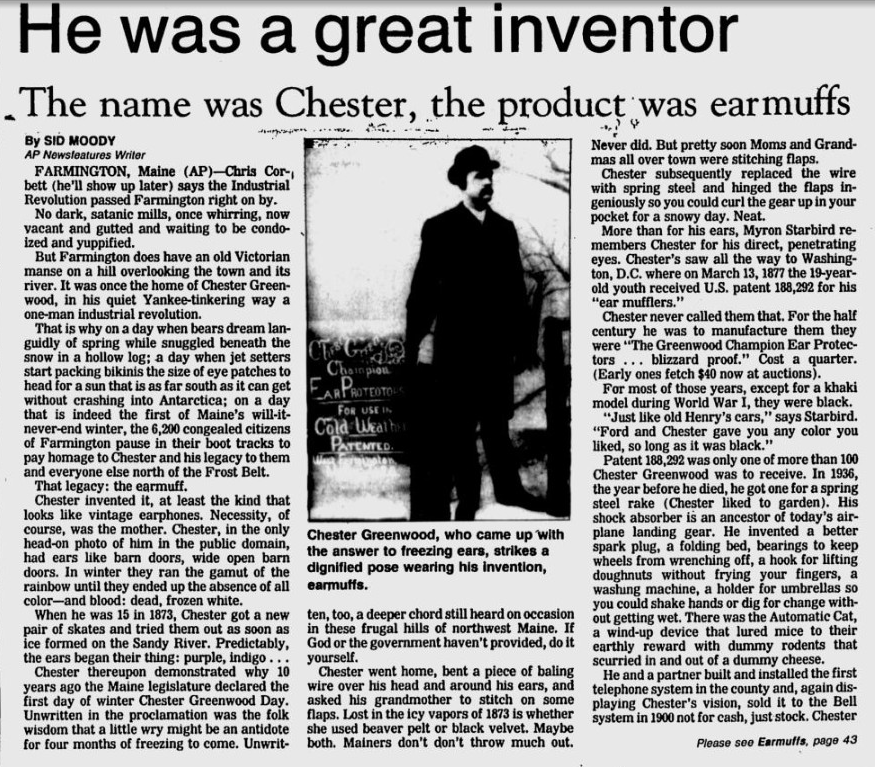
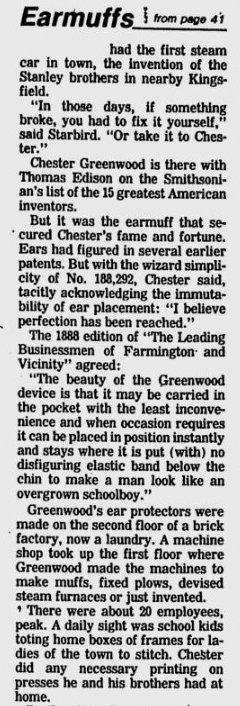
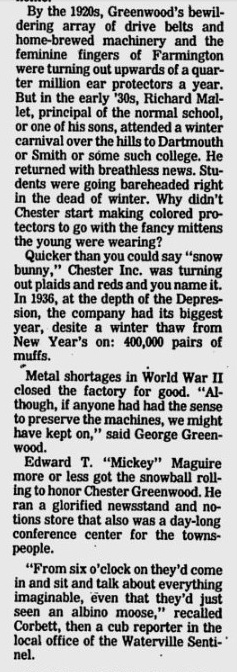
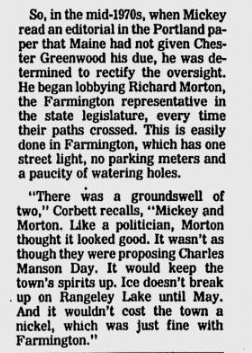
Article source.
Posted By: Paul - Wed Feb 06, 2019 -
Comments (0)
Category: Inventions, Regionalism, Nineteenth Century, Head
The Tree That Owns Itself
Recall those recent legal battles about granting new rights to animals? How about this for a precedent?From the Wikipedia page:
The Tree That Owns Itself is a white oak tree that has, according to legend, legal ownership of itself and of all land within eight feet (2.4 m) of its base. The tree, also called the Jackson Oak, is located at the corner of South Finley and Dearing Streets in Athens, Georgia, United States. The original tree, thought to have started life between the mid-16th and late 18th century, fell in 1942, but a new tree was grown from one of its acorns, and planted in the same location. The current tree is sometimes referred to as the Son of The Tree That Owns Itself. Both trees have appeared in numerous national publications, and the site is a local landmark.
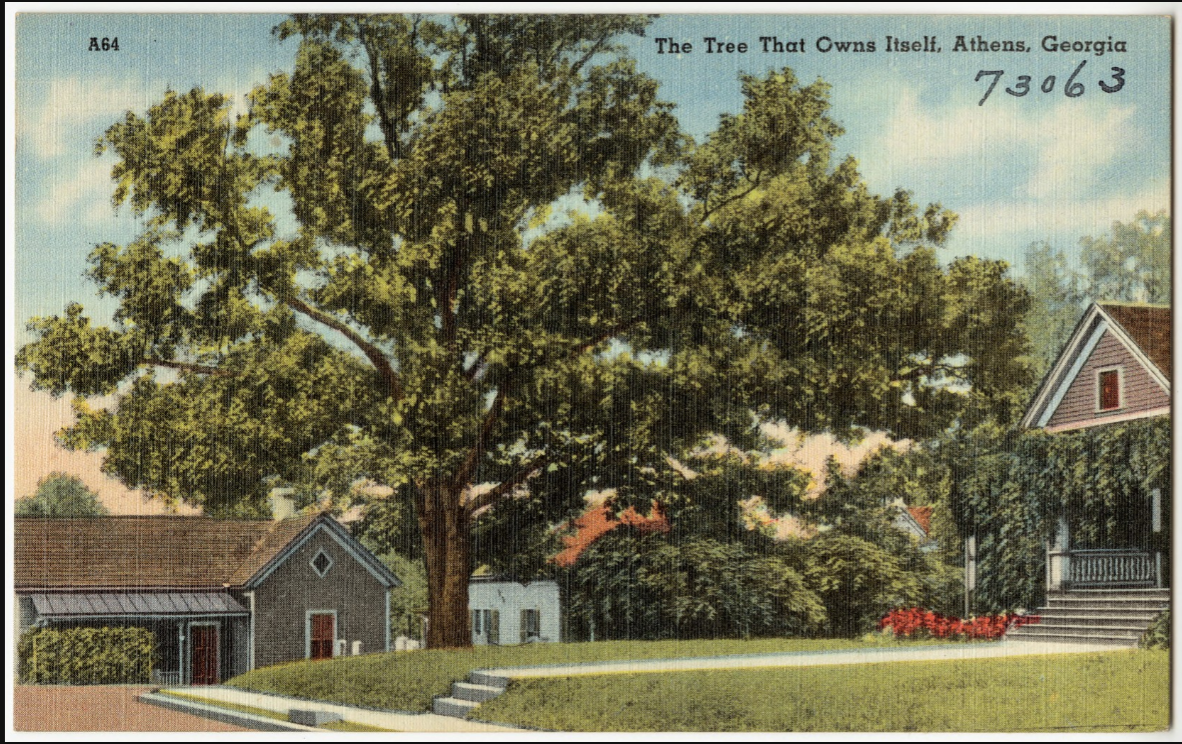
Posted By: Paul - Thu Jan 31, 2019 -
Comments (0)
Category: Law, Nature, Nineteenth Century
The Mecklenburg Declaration of Independence
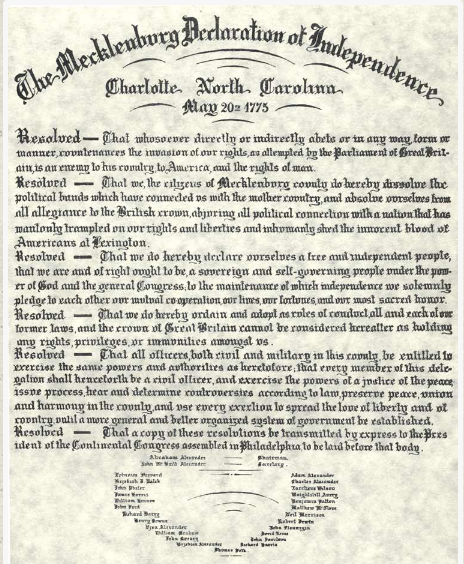
An honest mistaken memory, or a deliberate hoax to cash in on the early glamour of the American Revolution? You decide!
The Wikipedia page.
History Channel account.
The Mecklenburg Declaration of Independence is a text published in 1819 with the claim that it was the first declaration of independence made in the Thirteen Colonies during the American Revolution. It was supposedly signed on May 20, 1775, in Charlotte, North Carolina, by a committee of citizens of Mecklenburg County, who declared independence from Great Britain after hearing of the battle of Lexington. If the story is true, the Mecklenburg Declaration preceded the United States Declaration of Independence by more than a year. The authenticity of the Mecklenburg Declaration has been disputed since it was published, forty-four years after it was reputedly written. There is no verifiable evidence to confirm the original document's existence and no reference to it has been found in extant newspapers from 1775.[citation needed]
Professional historians have maintained that the Mecklenburg Declaration of Independence is an inaccurate rendering of an authentic document known as the Mecklenburg Resolves. The Mecklenburg Resolves were a set of radical resolutions passed on May 31, 1775, that fell short of an actual declaration of independence. Although published in newspapers in 1775, the text of the Mecklenburg Resolves was lost after the American Revolution and not rediscovered until 1838. Historians believe that the Mecklenburg Declaration was written in 1800 in an attempt to recreate the Mecklenburg Resolves from memory. According to this theory, the author of the Mecklenburg Declaration mistakenly believed that the Resolves had been a declaration of independence, and so he recreated the Resolves with language borrowed from the United States Declaration of Independence. Defenders of the Mecklenburg Declaration have argued that both the Mecklenburg Declaration and the Mecklenburg Resolves are authentic.
Posted By: Paul - Sat Jan 12, 2019 -
Comments (0)
Category: Antiques, Anachronisms and Throwbacks, Confusion, Misunderstanding, and Incomprehension, Government, Hoaxes and Imposters and Imitators, Politics, Eighteenth Century, Nineteenth Century
Home for Incurables
As late as 1952, "homes for incurables" were a going concern. Contemporary medicine seems to have abandoned the term "incurable" in favor of others that are perhaps less of a downer.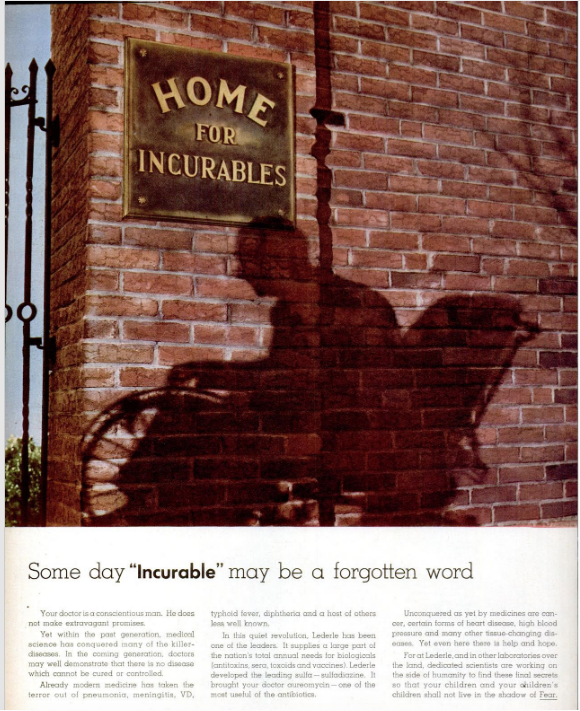
Source.
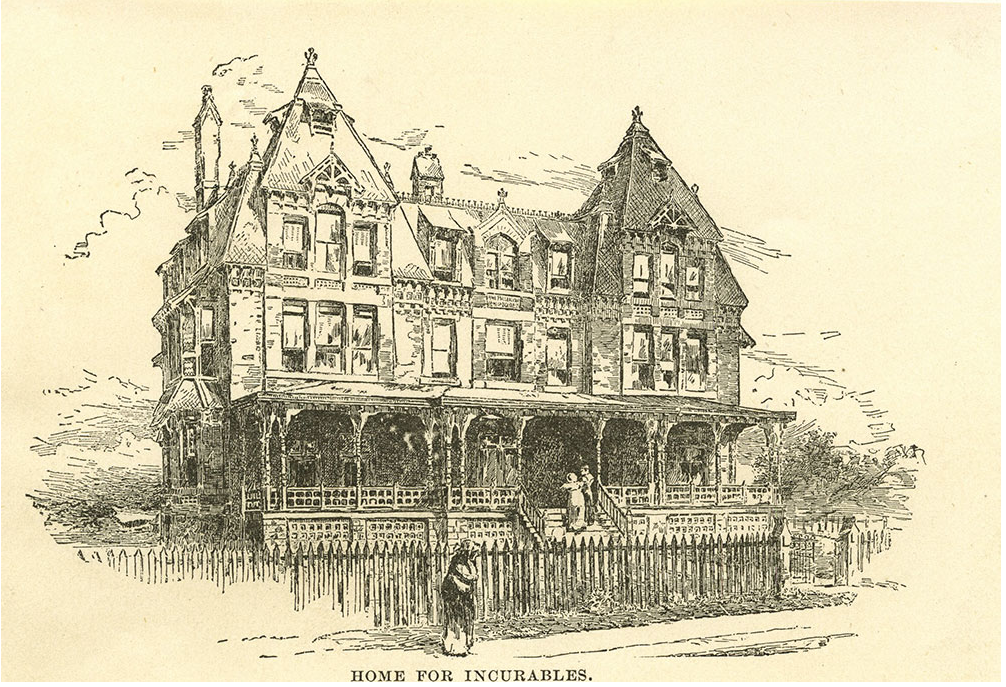
Source.
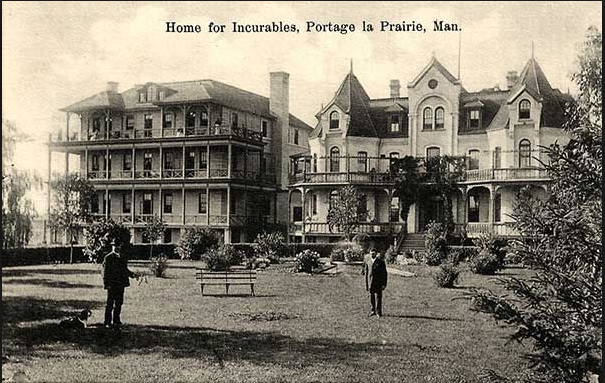
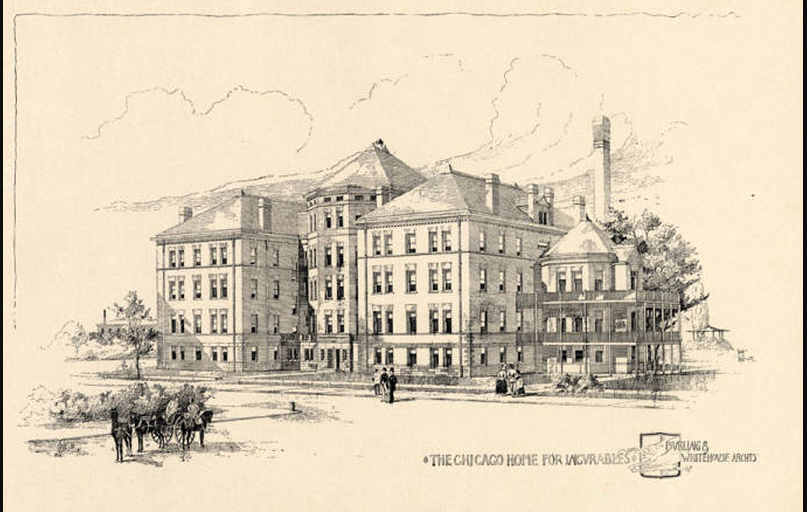
Posted By: Paul - Thu Jan 03, 2019 -
Comments (2)
Category: Architecture, Charities and Philanthropy, History, Medicine, Nineteenth Century, Twentieth Century
Unauthorized Dwellings 7
The famous author Robert Louis Stevenson spent a large part of his honeymoon squatting in an abandoned cabin.After their marriage in San Francisco on 19 May 1880, Fanny and Robert Louis Stevenson set off on an adventurous honeymoon to the Napa Valley. Stopping briefly for a night in Vallejo, the Stevenson’s then boarded a train to carry them (and their dog Chuchu) to Calistoga at the northern end of the Valley. They spent the remainder of May in Calistoga, at one of the Hot Springs Hotel cottages. Then, once joined by Fanny’s son Lloyd Osbourne, the family made their way up the grade of Mount St. Helena to the Toll House, from which they found their way to the abandoned Silverado Mine bunkhouse where they would squat until the end of July.
You can read his account of that time, THE SILVERADO SQUATTERS, here.
Or, you can visit the state park named after the writer.
Posted By: Paul - Tue Dec 18, 2018 -
Comments (2)
Category: Buildings and Other Structures, Nature, Unauthorized Dwellings, Marriage, Nineteenth Century
Reasons for Murder
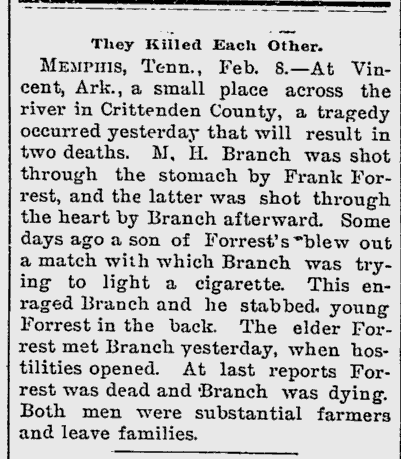
Source.
Posted By: Paul - Fri Oct 26, 2018 -
Comments (4)
Category: Annoying Things, Antisocial Activities, Death, Stupid Criminals, Nineteenth Century
Mystery Illustration 78

What is the material and provenance of this coat?
The answer is here.
Or after the jump.
More in extended >>
Posted By: Paul - Thu Oct 25, 2018 -
Comments (3)
Category: Fashion, Nineteenth Century

| Who We Are |
|---|
| Alex Boese Alex is the creator and curator of the Museum of Hoaxes. He's also the author of various weird, non-fiction, science-themed books such as Elephants on Acid and Psychedelic Apes. Paul Di Filippo Paul has been paid to put weird ideas into fictional form for over thirty years, in his career as a noted science fiction writer. He has recently begun blogging on many curious topics with three fellow writers at The Inferior 4+1. Contact Us |




